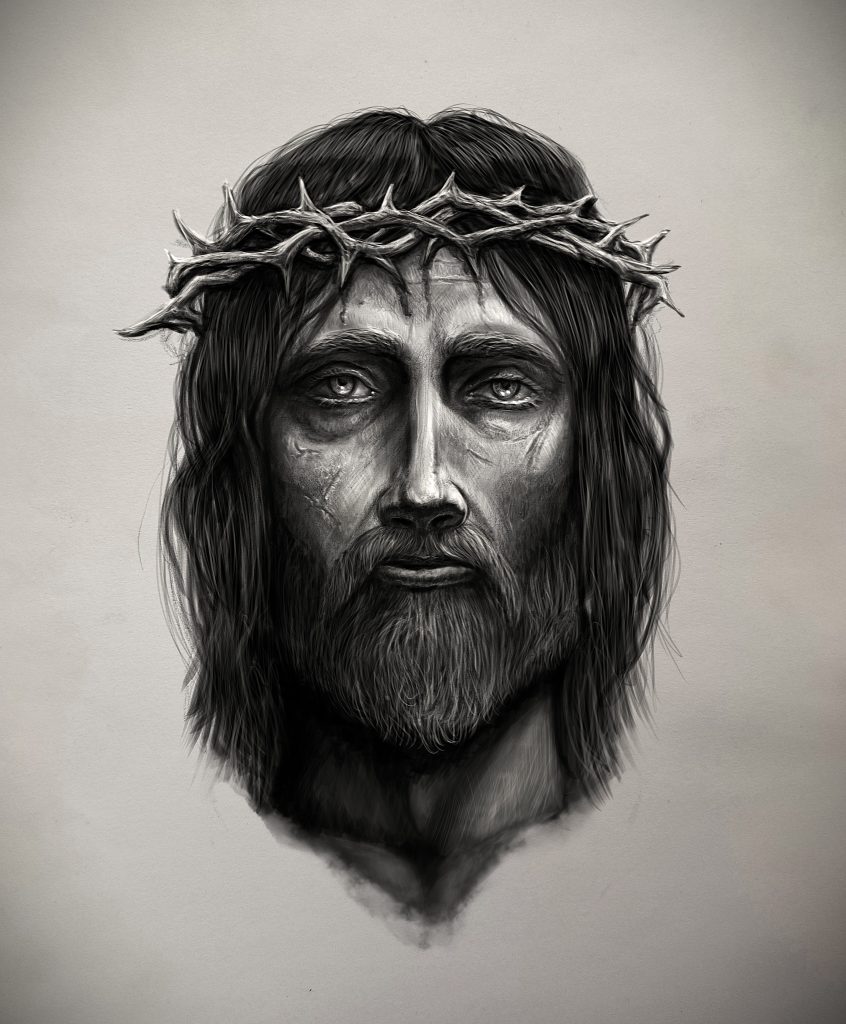
Characters in the Narrative are Described.
“Then another sign appeared in heaven: and behold, a great red dragon having seven heads and ten horns, and on his heads were seven crowns. 4 And his tail swept away a third of the stars of heaven and hurled them to the earth. And the dragon stood before the woman who was about to give birth, so that when she gave birth, he might devour her Child.” – Revelation 12 :3-4 NASB.
There is an important literary pattern in the book of Revelation. Whenever a new character appears in the story, the author pauses the narrative and offers a visual description of the character and a bit of his or her previous history. This “freeze-frame” device often helps the reader identify the character. After this introduction, the character plays a role in the larger story.
In Chapter I, Jesus appears as a character in the vision for the first time (Rev 1:12-18) [He is named earlier]. There is a visual description (Rev 1:12-16) and a bit of His previous history (Rev 1:17-18), followed by His actions in the subsequent vision (Rev 2 & 3). In Chapter 11, the two witnesses are introduced in the same way (Rev 11: 3-6), followed by their actions in the context of the vision (Rev 11: 7-13).
Two new characters appear at the beginning of Rev 12:1-4. First, there is a visual description of a woman and a bit of her previous history. Then a dragon appears and is also introduced. Only then do both characters begin to act in the context of the vision (v:5-9). The male child of v5, on the other hand, is not introduced with visual description, probably because He has already been introduced earlier in a different form (Rev 1:12-18).
I hope this helps you make sense of what seems to be a jumping around in the story. However, as in the chiastic structure and all the things we have mentioned that overlay the book, this is part of the explicit pattern of the book. Once we understand what is happening it becomes much easier to follow the narrative.
A strange-looking animal does extraordinary things here. At first glance, stories like this seem totally out of touch with today’s world. But that is not really the case.
Take the Disney cartoon-movie The Lion King, for example. Like Revelation, it appears to be a simple animal story at first glance. But it is much more. While appropriated from Shakespeare’s Hamlet, it is also a parable about the way people and groups of people interact with each other. It is about taking risks, developing relationships, avoiding conflict, and confronting issues that make a difference in everyday life.
But the Lion King is even more than a sociological treatise in disguise. It is based on an African version of apocalyptic. The story involves the ruin and restoration of a paradise wherein all functions in happiness and prosperity. It is about an evil that arises from a dark place at the edge of paradise. It is about the hope for the future that can arise when a redeemer figure seizes his destiny with courage.
That’s what makes the Book of Revelation so powerful. Although it reads like an animal story (Rev11:7;12:1-17;13:1-18;17:1-18), it’s not really about animals. It is a prophetic cartoon fantasy about people and their relationships, about interactions among groups of people, both good and evil, and how the course of human history is going to turn out. In other words, it is about the fundamental issues we all wrestle with from day to day.
Movies tend to be most successful when they intersect with the basic struggles, conflicts, and tensions within society’s popular myths and fears. Movies like The Lion King show that apocalyptic genre is as popular today as it was when the Book of Revelation was written. The credibility of apocalyptic movies depends on whether their analysis of society and the human condition is believable. The same was true of ancient apocalypses.
No one knows whether The Lion King will be remembered a hundred years from now. But the Book of Revelation has spoken powerfully for almost 2000 years. It helps us understand ourselves and the situation of the whole human race. It mirrors reality in a way that bypasses our psychological and emotional defence.
